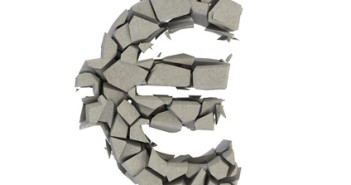Hopes are very high after Mario Draghi said he will do “everything to save the euro” and added “believe me, it will matter”. His words were later echoed by German and French leaders. This comes as Spanish and Italian bond yields are at unsustainable levels for too long, despite many summits.
What can Draghi and the ECB do? Quite a lot. The ECB is the only factor in Europe that has the tools to tackle the crisis in a fast and strong manner. A full quantitative easing program would do wonders. Here’s more about QE and other options that Draghi and his colleagues have.
Draghi disappoints: Summary: Draghi Didn’t Deliver – Overestimated Spain and Underestimated Germany
Live blog of Draghi
Here are all the 8 options awaiting Draghi, with a verdict if they will be received as a delivery or as a disappointment.
Update: Here are 5 reasons why Draghi could disappoint
Update 2: Germany and the ECB Want More Cuts in Spain Before Lowering Yields
Update 3: the ECB leaves all rates unchanged.
The ECB bought bonds already two years ago (of Greece), and already bought Spanish and Italian bonds in the summer of 2011, after giving the governments detailed “recommendations”. It bought bonds in the secondary market at a limited scale and it also sterilized the buys: instead of printing money, it drained the same amount of money out of the markets. At one stage, Trichet seemed close to full QE, but didn’t take the extra step.
This is different from the money creation (or printing) made by the Federal Reserve and the Bank of England, and the ECB already stopped using its SMP program 19 weeks ago, as the LTRO came into effect.
The ECB could take two steps forward by renewing the bond buying program, but doing it significantly differently:
- A massive scale unseen beforehand: this will trigger other market participants to join in, seeing that the ECB is serious and looking to profit from rising bond values (falling yields).
- Without sterilizing the bond buys. The reason for this would either be the fear of not being able to drain out the funds, or by a declaration that this is a step that tackles the danger of deflation, thus within the ECB’s mandate.
An unsterilized QE program can weaken the euro, as the ECB is effectively pouring more money into the markets. If the euro will indeed weaken, this will have another advantage for Spain, as it badly needs a weaker euro for its exports.
However, we’ve already seen that printing money has the strongest effect in the US, and not in other places. The market cheer for such a bold move will likely strengthen the common currency and outweigh the potential devaluation effect of QE.
As aforementioned, this is the biggest possible move, but there doubts if Germany and its members in the ECB will endorse such a move that can cause inflation.
The ECB has quite a few other options:
- Another rate cut: After the previous historic low of 1% was breached last month, another cut to 0.50% or 0.25% is certainly on the cards. A lower interest rate will help the struggling economies grow.
- A negative deposit rate: The ECB already cut the deposit rate from 0.25% to 0%, discouraging banks to park their money at the ECB. Denmark went one step further and set a negative interest rate, thus “punishing” banks for not lending out the money. The ECB could follow.
- Another LTRO: The massive, one trillion euro Long Term Refinancing Operation seemed to do wonders at first, and seemed to be a smart way of indirect QE: bond yields fell and the fear of a credit crunch disappeared. In addition, banks enjoyed an arbitrage – lending at low rates from the ECB and enjoying higher sovereign bond yields. However, they backfired later on. When the situation got worse in Spain and Italy, bond yields rose again, leaving banks with losses. Some banks leveraged their buys, amplifying the losses and putting more pressure on the sovereign to save them. The recent EU summit pledged to break the link between the sovereigns and the banks. Draghi will likely hesitate before announcing a new LTRO.
- Loosening collateral rules: The ECB already did it before: accepting lower grade collateral (lower grades of sovereign bonds) in return for loans. It could loosen the rules once again, practically ignoring rating agencies, which are widely criticized for their role in the crisis.
The stakes are very high for this rate decision. Draghi needs to deliver something big, and this will boost the euro. Contrary to politicians, Draghi has the tools and the credibility. The markets cheered his words, but didn’t go to far. Not yet. There are still enough reasons to doubt if Draghi is serious.
If he doesn’t deliver, stock markets and the euro will take a huge dive, also placing Draghi and the ECB together with EU leaders, which promise too much and fail to deliver.
Will we see Super Mario or will Draghi drag the euro down?
Further reading: EUR/USD forecast.
